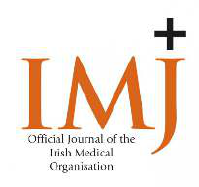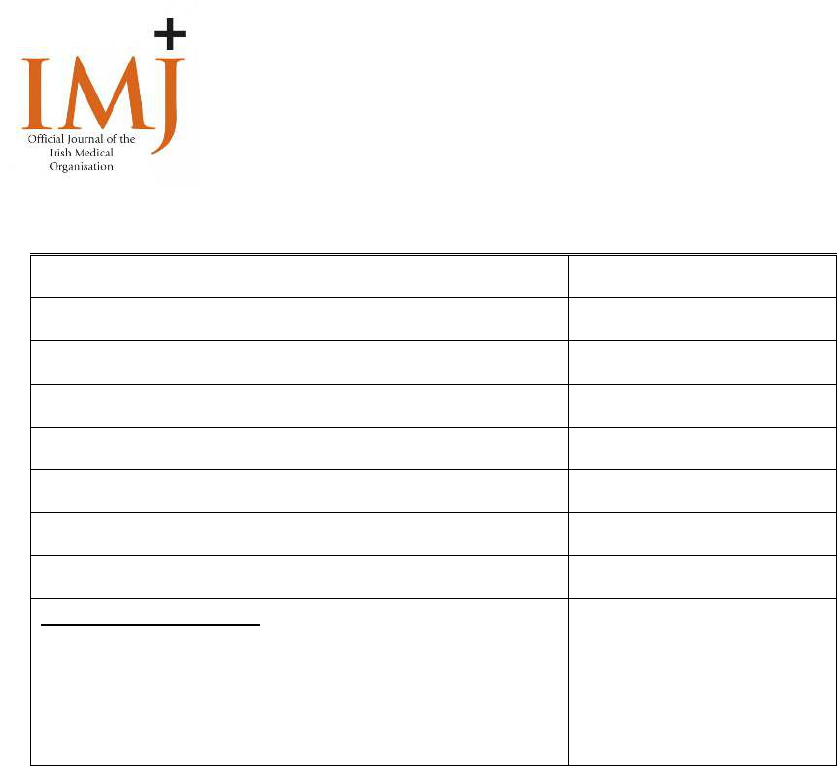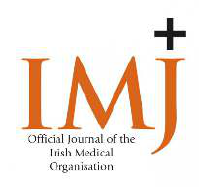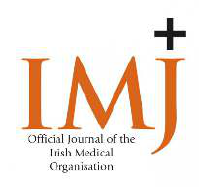
Ir Med J; November-December 2023; Vol 116; No. 10; P873
December, 2023
th
14
The outcome of trisomy 18 pregnancies following the
legalisation of termination of pregnancy
1,2
O'Donoghue ., K
1
Uribe ., C
1
Miremberg .H
1. Pregnancy Loss Research Group, Department of Obstetrics and Gynaecology,
Cork University Maternity Hospital, Cork, Ireland
2. INFANT Research Centre, University College Cork, Cork, Ireland
Abstract
Aim
Termination of pregnancy (TOP) became legal in Ireland in 2019, inclusive of
conditions likely to lead to the death of the fetus, making TOP for 'fatal fetal
anomaly' (FFA) an option. Trisomy 18 (T18) is the second most common lethal
trisomy, with associated major structural anomalies. We aimed to study T18
pregnancy decisions and outcomes following the legalisation of TOP for FFA.
Methods
Retrospective study of all pregnancies diagnosed with T18 from 2019-2022,
e.medicine (FM) referral databasidentified through the fetal
Results
We identified forty-seven T18 pregnancies. In 59.6% (28/47), TOP was performed,
with median gestational age (GA) at delivery of 18 weeks (range;17-22 weeks).
Parents choosing to continue pregnancy represented 17% (8/47) of the cohort, with
six women delivering at term. In 11/47 cases, intrauterine death occurred in the
second trimester (range; 13.2-18 weeks). Parents choosing TOP were referred to
fetal medicine services at a significantly earlier GA when compared to those who
chose to continue the pregnancy (14 weeks vs. 21.5 weeks, p<0.010; respectively).
Conclusions
Following a T18 diagnosis, parents may choose to continue or terminate the
pregnancy, with both care options now available in Ireland. Universal access to first-
trimester prenatal aneuploidy screening would facilitate wider and earlier parental
choice and decision-making.

Ir Med J; November-December 2023; Vol 116; No. 10; P873
December, 2023
th
14
Introduction
Trisomy 18 (T18) is the second most common autosomal aneuploidy after Trisomy 21.
The main clinical features of T18 include a range of major structural anomalies,
characteristic craniofacial features, distinctive hand posture, and fetal growth
restriction
1,2
. The live birth prevalence of trisomy 18 is estimated as 1/6,000-1/10,000.
However, the overall prevalence is higher (1/2000) due to the high frequency of fetal
loss and pregnancy termination after prenatal diagnosis
3–6
. An older report from our
region (Cork, Ireland) published in 2013 on pregnancies diagnosed with T18
demonstrated the increased risk of spontaneous miscarriage, fetal death, and short
life span (median 1.5 days)
7
.
National screening programmes exist in many countries with different combinations
of maternal serum biochemical markers with or without nuchal translucency [NT]
measurement. Non-invasive prenatal testing (NIPT) is now available in over 60
countries and was shown to have higher sensitivity and specificity for T18 compared
to the traditional combined first and second-trimester screening tests. This allows
most T18 pregnancies to be prenatally diagnosed
8–10
.
Currently, in our settings, pregnant women are offered a first trimester visit, including
an ultrasound to date the pregnancy
11
with no national screening programme for
aneuploidies
12
. The mid-trimester anomaly scan is now available to all women in
Ireland with a new clinical guideline published to standardise care
13
.
The Eighth Amendment of the Irish Constitution prohibited legal termination of
pregnancy (TOP)
14
. Following an electoral referendum, legislation led to the
introduction of TOP services in 2019. Section 11 of the legislation describes TOP for a
"condition likely to lead to the death of the fetus in utero or within 28 days of birth"
15
, including for so-called 'fatal fetal anomaly (FFA),' a non-medical term popularised
by parent groups and the media
16
.
Under Irish law and in clinical practice, T18 is considered a FFA therefore, parents may
choose to continue or terminate the pregnancy with no upper gestational age limit. A
delay in prenatal diagnosis of T18 due to the lack of formal first trimester screening
might impact the parents' informed decisions
17
.

Ir Med J; November-December 2023; Vol 116; No. 10; P873
December, 2023
th
14
Thus, in this current study, we aimed to describe parents' decisions and the outcome
of T18 pregnancies following the legalisation of TOP in the Republic of Ireland.
Methods
We performed a retrospective cohort study in a single tertiary centre between 2019
and 2022. Cases were identified through the fetal medicine referral database. The
institutional ethical review board approved this study.
All pregnancies diagnosed with T18 after referral to a Fetal Medicine specialist clinic
were included in our study. We did not include T18 cases from miscarriages when this
was diagnosed on cytogenetic testing or at a post-mortem examination. We also
excluded births where T18 was diagnosed postnatally. For the purpose of this study,
we compared cases where parents chose to continue pregnancy versus those who
chose TOP.
Computerized files eligible for inclusion were reviewed, and the following data were
obtained from the hospital's electronic maternity record: maternal demographics
characteristics, gestational age (GA) at referral to a Fetal Medicine Specialist,
indication for the referral, gestational age at diagnosis, non-invasive and invasive
genetic testing, mode of delivery, gestational age at delivery or at TOP, birthweight
and length of survival in those who were live born. The parents' decision is
documented in the electronic charts following genetic result confirmation by invasive
test, and approval for TOP requires the input of a multidisciplinary team meeting.
Categorical variables were summarized as frequency and percentage. Continuous
variables were reported as mean, standard deviation, median, and interquartile range.
The Chi-square test and Fisher's exact test were applied to compare categorical
variables, while independent samples T test or Mann-Whitney test were used to
compare continuous variables. P-value less than 0.05 was considered statistically
significant. SPSS software was used for all statistical analyses (IBM SPSS statistic for
Windows, version 28, IBM corp., Armonk, NY USA 2021).
Results

Ir Med J; November-December 2023; Vol 116; No. 10; P873
December, 2023
th
14
During the study period, 28,225 births occurred at Cork University Maternity Hospital
(CUMH). Out of them, we identified 47 pregnancies diagnosed with T18 through the
Fetal Medicine database (Figure 1). The demographic characteristics of the cohort are
presented in Table 1. The average maternal age was 37.5±4.2 years, with advanced
maternal age> 35 years in 85% (40/47) of our cohort. Twenty-five percent of the
women were primiparous, and 47.9% had a previous pregnancy loss.
TOP was performed in 59.5% (28/47) pregnancies, with median GA at delivery of 18
weeks (range; 17-22 weeks). The interval from referral to fetal medicine services to
TOP was four weeks (range; 3-5 weeks). This interval encompasses the duration from
the first suspicion of a concern, the referral to the fetal medicine specialist, the process
of genetic testing and awaiting complete test results, the case presentation at the
multidisciplinary meeting, to the approval and certification of the termination of
pregnancy (TOP). Three women chose to undergo chorionic villus sampling (CVS)
at 12
weeks in another institution; others waited for amniocentesis at/after 15 weeks.
Referral indications in the TOP group were: Increased NT/ cystic hygroma in 51.8%
(14/28), high-risk NIPT in 21.4% (6/28), and structural abnormalities in 28.6% (8/28).
In our setting, TOP was performed through medical induction without fetal
monitoring.
In 23.4% (11/47) cases, parents' wishes were not documented since second-trimester
miscarriage occurred before full investigations were completed. The median GA at
diagnosis in this group was 13 weeks (range; 13-18 weeks) and GA at intrauterine fetal
death was 15 weeks (range; 14-16 weeks), with the median interval from diagnosis to
the demise of 2 weeks (range; 1-2.5 weeks
Parents deciding to continue pregnancy represented 17% (8/47) of the cohort. The
average GA at delivery was 38 weeks (range; 33-38.5 weeks), with 75% (6/8) of
pregnancies reaching term.
In Table 2, we compared women who had TOP (n=28) versus those who chose to
continue with pregnancy (n=8). The GA at referral to fetal medicine services occurred
significantly earlier in the TOP group compared to those who decided to continue with
pregnancy (14 vs. 21.5 weeks, p<0.010, respectively). The indication for referral
differed significantly between the groups (p=0.034). In the group that decided to

Ir Med J; November-December 2023; Vol 116; No. 10; P873
December, 2023
th
14
continue with the pregnancy, 75% were referred due to structural anomalies detected
at the anatomy ultrasound scan, compared to only 28.6% in the TOP group.
The details of the outcomes of the pregnancies delivered at term are presented in
Table 3.
Table 1- Characteristics of the 47 study participants
Data presented as mean ± standard deviation (SD), or number (rate) as appropriate.
BMI- body mass index; ART- assisted reproductive technology; FMS- fetal medicine
specialist; GA- gestational age; NT- nuchal translucency; NIPT- non-invasive prenatal
testing.
37.5±4.2
Maternal age (years)
40/47 (85.1)
Advanced maternal age>35 years old, n (%)
12/47 (25.5)
Primiparity, n (%)
25.9±3.2
BMI
23/47 (48.9)
Previous pregnancy loss, n (%)
1/47 (2.1)
Smoking, n (%)
2/47 (4.2)
ART, n (%)
14.5 (13-20.5)
GA at 1
st
FMS clinic (weeks)
Indications for referral
24/47 (51)
Increased NT/ cystic hygroma
8/47 (17)
High Risk NIPT
15/47 (31.9)
Structural abnormalities

Ir Med J; November-December 2023; Vol 116; No. 10; P873
December, 2023
th
14
Table 2- Comparison between women choosing to continue pregnancy and women
choosing termination of pregnancy
Data presented as mean ± standard deviation (SD), or median (interquartile range) or
n (%) as appropriate. TOP- termination of pregnancy; AMA- advanced maternal age;
GA- gestational age; FMS- fetal medicine specialist.
Table 3- Outcomes of trisomy 18 term deliveries
Case
Year
Gestational
age at
referral
(weeks)
Indication for
referral
to Fetal
Medicine
Pregnancy
outcome
Neonatal
outcome
P value
Continue pregnancy
n=8
TOP
n=28
0.768
37.1±4.2
37.6±4.2
Maternal age
>.99
7 (87.5)
24 (85.7)
AMA>35 years old, n (%)
0.658
3 (37.5)
7 (25)
Primiparity, n (%)
0.422
3 (37.5)
17 (60.7)
Previous pregnancy loss, n (%)
0.010
21.5 (18.5-21.5)
14 (13-16.5)
GA at 1
st
FMS clinic (weeks)
0.005
6 (75)
5 (17.8)
Referred from anomaly scan
0.034
6 (75)
8 (28.6)
Structural indication for referral

Ir Med J; November-December 2023; Vol 116; No. 10; P873
December, 2023
th
14
1
2019
22+2
Fetal growth
restriction +
Bilateral choroid
plexus cysts
Induction and
vaginal delivery at
38 weeks
Boy- 2240 grams
Neonatal death at
1 day
2
2019
30+5
Fetal growth
restriction +
polyhydramnios
Induction and
vaginal delivery at
38 weeks
Pregnancy induced
hypertension
Boy- 1900 grams
Intrapartum
death
3
2019
21+4
Multiple
anomalies
Induction and
vaginal delivery at
38 weeks
Boy- 1800 grams
Intrapartum
death
4
2020
22+5
Fetal growth
restriction+
cardiac anomaly
Elective Caesarean
delivery at 38
weeks
Girl- 1840 grams
Neonatal death at
6 days
5
2021
13+1
Cystic hygroma
(later, multiple
anomalies)
Spontaneous
breech delivery at
39 weeks
Girl- 2280 grams
Intrapartum
death
6
2021
19+4
Multiple
anomalies
Spontaneous
vaginal delivery at
37 weeks
Girl -1670 grams
Neonatal death at
2 days

Ir Med J; November-December 2023; Vol 116; No. 10; P873
December, 2023
th
14
Discussion
In this study, we identified pregnancies diagnosed with Trisomy 18 following the
legalisation of termination of pregnancy in the Republic of Ireland. Our cohort
consisted of forty-seven pregnancies, with 59% of parents choosing TOP, while the
proportion choosing to continue pregnancy represented 17% of the cohort. Of these,
we had six-term deliveries with 50% live births. In contrast to other studies
18,19
that
reported longer lifespans but similar to our previous report
7
, the most extended
survival was one week.
The American College of Obstetrics and Gynecology (ACOG)
10
recommends that
prenatal genetic screening options be discussed and offered to all pregnant women
regardless of age or risk for chromosomal abnormality
. However, it is essential to
remember that a screening test also requires extensive pre-and post-test counselling
and informed consent from parents
20
. Other professional bodies and organisations
provide guidance and recommendations on topics such as patient selection, pre-test
counselling, test performance characteristics, and the integration of NIPT into existing
prenatal screening programmes
21–25
.
There is no national first trimester aneuploidy screening programme in Ireland
26
.

Ir Med J; November-December 2023; Vol 116; No. 10; P873
December, 2023
th
14
Women in Ireland can choose to pay for private aneuploidy screening tests
27
, which is
an apparent inequity in access to care. Moreover, most Irish pregnant women would
choose testing if it was available
28,29
. A recent publication studied the perspectives
and awareness of pregnant women regarding prenatal screening for fetal trisomy in
Ireland. The study demonstrated that while pregnant women possess a reasonable
grasp of how to interpret screening test outcomes, they had limited awareness of the
prenatal screening choices available to them. It is important to prioritise efforts to
ensure that pregnant women receive equal and comprehensive information about
and, ideally, access to NIPT at an early stage in their pregnancy
30
, so they may make
an informed choice about NIPT. Some will opt out of screening, and this can be
influenced by personal beliefs, risk perceptions, access, affordability and cultural or
religious beliefs. Within our cohort, we do not have full detail on the information given
to women about screening, and whether they had had access to private funding or
declined screening.
The decision to terminate a pregnancy following a FFA diagnosis is a personal and
complex decision influenced by various factors, including the severity of the diagnosis,
cultural and religious beliefs as well as access to prenatal care and genetic diagnosis
31–
34
. In our study, parents who decided to continue pregnancy were diagnosed later in
gestation, primarily due to structural anomalies identified at the second-trimester
anatomy ultrasound. It is, therefore, reasonable to speculate that the relatively late
GA at diagnosis could influence parents' decisions, and it has been previously shown
how GA at diagnosis substantially affects maternal-fetal attachment
35
. Further, it is
important to consider the medical consequences of late gestation in cases of TOP
36,37
.
Our findings contrast with a similar study published recently
38
that presented the
outcomes of trisomy 18 in a public hospital in South Africa. In their study, no significant
difference in gestational age at diagnosis was demonstrated between those who did
and did not terminate their pregnancies (23.1±5.1 vs. 24.7±5.3 weeks; p = 0.067).
However, in their study, both groups received the diagnosis at a later GA.
A qualitative analysis of parental decision making following the diagnosis of suspected
anomaly identified that parents have a nonlinear three-phase process: "information
seeking," reflecting the way parents-to-be face the uncertainty associated with a fetal
diagnosis and related prognosis; "implications," where consideration is given to future
consequences of the decision; and "decision making," which reflects how the decision
is made (head- or heart-led)
39
. Another recent qualitative study
40
described the care

Ir Med J; November-December 2023; Vol 116; No. 10; P873
December, 2023
th
14
experiences of Irish parents whose pregnancy was diagnosed with FFA (mainly trisomy
18). This study described parents' need for consistent, well
-communicated, and
comprehensive care, irrespective of decisions made, which encourages a perinatal
palliative care approach that is individual to the parents. Both studies highlight the
need to improve the communication between healthcare professionals and patients
and to allow enough time and provide adequate information for parents facing this
decision.
Our study is not without limitations. The retrospective design and our data collection
are based on cases referred to Fetal Medicine services, thus potentially under-
representing the pregnancies where a diagnosis was made only postnatally. We also
excluded cases where T18 was suspected but confirmed only postnatally. The strength
of the study is in a relatively large cohort over four years from a single referral centre,
as well as the novelty of the study looking at parental decisions following the
legalisation of TOP in Ireland.
In conclusion, following the diagnosis of trisomy 18, parents may choose to continue
or terminate the pregnancy, with both care pathways available in Ireland’s maternity
services since 2019. We should provide the choice to access universal first-trimester
prenatal screening alongside expanded early anatomy ultrasound for all pregnant
women to facilitate wider and earlier parental decision-making.
Declarations of Conflicts of Interest:
None declared.
Corresponding author:
Hadas Miremberg,
Department of Obstetrics and Gynaecology,
Cork University Maternity Hospital,
Wilton,
Cork,
Ireland.
E-Mail: [email protected]

Ir Med J; November-December 2023; Vol 116; No. 10; P873
December, 2023
th
14
References:
1. Cereda A, Carey JC. The trisomy 18 syndrome. Orphanet Journal of Rare
Diseases; 7. Epub ahead of print 2012. DOI: 10.1186/1750-1172-7-81.
2. Becker DA, Tang Y, Jacobs AP, et al. Sensitivity of prenatal ultrasound for
detection of trisomy 18. Journal of Maternal-Fetal and Neonatal Medicine; 32.
Epub ahead of print 2019. DOI: 10.1080/14767058.2018.1471460.
3. Dolk H, Loane M, Garne E. The prevalence of congenital anomalies in Europe.
Adv Exp Med Biol; 686. Epub ahead of print 2010. DOI: 10.1007/978-90-481-
9485-8_20.
4. Irving C, Richmond S, Wren C, et al. Changes in fetal prevalence and outcome
for trisomies 13 and 18: A population-based study over 23 years. Journal of
Maternal-Fetal and Neonatal Medicine; 24. Epub ahead of print 2011. DOI:
10.3109/14767051003758879.
5. Rasmussen SA, Wong LYC, Yang Q, et al. Population-based analyses of mortality
in trisomy 13 and trisomy 18. Pediatrics; 111. Epub ahead of print 2003. DOI:
10.1542/peds.111.4.777.
6. Forrester MB, Merz RD. Trisomies 13 and 18: Prenatal diagnosis and
epidemiologic studies in Hawaii, 1986-1997. Genet Test; 3. Epub ahead of print
1999. DOI: 10.1089/gte.1999.3.335.
7. Houlihan OA, O’Donoghue K. The natural history of pregnancies with a diagnosis
of Trisomy 18 or Trisomy 13; a retrospective case series. BMC Pregnancy
Childbirth; 13. Epub ahead of print 2013. DOI: 10.1186/1471-2393-13-209.
8. Gregg AR, Skotko BG, Benkendorf JL, et al. Noninvasive prenatal screening for
fetal aneuploidy, 2016 update: A position statement of the American College of
Medical Genetics and Genomics. Genetics in Medicine; 18. Epub ahead of print
2016. DOI: 10.1038/gim.2016.97.
9. Audibert F, De Bie I, Johnson JA, et al. No. 348-Joint SOGC-CCMG Guideline:
Update on Prenatal Screening for Fetal Aneuploidy, Fetal Anomalies, and
Adverse Pregnancy Outcomes. Journal of Obstetrics and Gynaecology Canada;
39. Epub ahead of print 2017. DOI: 10.1016/j.jogc.2017.01.032.
10. Rose NC, Kaimal AJ, Dugoff L, et al. Screening for Fetal Chromosomal
Abnormalities: ACOG Practice Bulletin, Number 226. Obstetrics and gynecology;
136. Epub ahead of print 2020. DOI: 10.1097/AOG.0000000000004084.
11. Mohamed M, McCormick CA, Foo A, et al. Dating Ultrasounds are Fundamental
to Modern Obstetric Care. Ir Med J; 115.

Ir Med J; November-December 2023; Vol 116; No. 10; P873
December, 2023
th
14
12. Petch S, Clinton S, Roche D, et al. Non-Invasive Prenatal Testing (NIPT) - We
Need a National Programme. Ir Med J; 115.
13. Fleming A, Corbett G, McParland P. The Fetal Anatomy Ultrasound,
https://www.rcpi.ie/faculties/obstetricians-and-gynaecologists/national-
clinical-guidelines-in-.
14. de Londras F. Constitutionalizing Fetal Rights: A Salutary Tale from Ireland. Mich
J Gend Law. Epub ahead of print 2015. DOI:
10.36641/mjgl.22.2.constitutionalizing.
15. Report of the Joint Committee on the Eighth Amendment of the Constitution,
December 2017. 2017.
16. Power S, Meaney S, O’Donoghue K. An assessment of the general public’s
knowledge of fatal fetal anomalies. Prenat Diagn; 38. Epub ahead of print 2018.
DOI: 10.1002/pd.5348.
17. Choi H, van Riper M, Thoyre S. Decision Making Following a Prenatal Diagnosis
of Down Syndrome: An Integrative Review. Journal of Midwifery and Women’s
Health; 57. Epub ahead of print 2012.
DOI: 10.1111/j.1542-2011.2011.00109.x.
18. Meyer RE, Liu G, Gilboa SM, et al. Survival of children with trisomy 13 and
trisomy 18: A multi-state population-based study. Am J Med Genet A; 170. Epub
ahead of print 2016. DOI: 10.1002/ajmg.a.37495.
19. Gunne E, Lynch SA, McGarvey C, et al. Fatal fetal abnormality Irish live-born
survival—an observational study. J Community Genet; 12. Epub ahead of print
2021. DOI: 10.1007/s12687-021-00534-3.
20. Biggio JR, Ralston SJ. Counseling About Genetic Testing and Communication of
Genetic Test Results. Obstetrics and Gynecology; 129. Epub ahead of print 2017.
DOI: 10.1097/AOG.0000000000002011.
21. Dondorp W, De Wert G, Bombard Y, et al. Non-invasive prenatal testing for
aneuploidy and beyond: Challenges of responsible innovation in prenatal
screening. European Journal of Human Genetics; 23. Epub ahead of print 2015.
DOI: 10.1038/ejhg.2015.57.
22. Bakkeren IM, Kater-Kuipers A, Bunnik EM, et al. Implementing non-invasive
prenatal testing (NIPT) in the Netherlands: An interview study exploring
opinions about and experiences with societal pressure, reimbursement, and an
expanding scope. J Genet Couns; 29. Epub ahead of print 2020. DOI:
10.1002/jgc4.1188.
23. Royal College of Obstetricians & Gynaecologists. Non-invasive Prenatal Testing
for Chromosomal Abnormality using Maternal Plasma DNA.
RCOG Scientific
Impact Paper.

Ir Med J; November-December 2023; Vol 116; No. 10; P873
December, 2023
th
14
24. MacVille M, Van Der Meij K, Sistermans E, et al. National implementation of
genomewide non-invasive prenatal testing as a firsttier screening test in the
Netherlands: The TRIDENT-2 study.
Prenat Diagn; 40.
25. Hui L, Ellis K, Mayen D, et al. Position statement from the International Society
for Prenatal Diagnosis on the use of non-invasive prenatal testing for the
detection of fetal chromosomal conditions in singleton pregnancies. Prenatal
Diagnosis. Epub ahead of print 2023. DOI: 10.1002/pd.6357.
26. Petch S, Clinton S, Roche D, et al. Non-Invasive Prenatal Testing (NIPT) - We
Need a National Programme. Ir Med J; 115.
27. Kennedy Sarah, Miremberg Hadas, O’Donoghue Keelin. Non-invasive prenatal
testing: Assessing the availability and accessibility of information available to
the pregnant population within the Republic of Ireland Special Issue: British
Maternal and Fetal Medicine Society and MacDonald Obstetric Medicine
Society conference abstracts 2022; April 2023, Volume 130, Issue S1, Page:52.
BJOG 2023; 130: 4–129.
28. Kelly Kristin, Leito Sara, Meany Sarah, et al. Evaluation of women’s opinions on
prenatal screening tests for fetal trisomy. Top Scoring Abstracts of the RCOG
World Congress 2022, London 13-15 June 2022 BJOG: An International Journal
of Obstetrics & Gynaecology 2022; 129: 212–213.
29. Ononeze BO, Gaffney G, Morrison JJ. Attitudes towards routine prenatal
diagnostic investigations in obstetrics practice in the Republic of Ireland. Ir Med
J; 96.
30. Kelly K, Leitao S, Meaney S, et al. Pregnant people’s views and knowledge on
prenatal screening for fetal trisomy in the absence of a national screening
program. J Genet Couns. Epub ahead of print 18 September 2023. DOI:
10.1002/jgc4.1769.
31. Schechtman K, Gray D, Baty J, et al. Decision-making for termination of
pregnancies with fetal anomalies: analysis of 53,000 pregnancies.[Erratum
appears in Obstet Gynecol 2002 Apr;99(4):678].
Obstetrics & Gynecology; 99.
32. Asplin N, Wessel H, Marions L, et al. Pregnant women’s perspectives on
decision-making when a fetal malformation is detected by ultrasound
examination. Sexual and Reproductive Healthcare; 4. Epub ahead of print 2013.
DOI: 10.1016/j.srhc.2013.02.001.
33. Benute GRG, Nomura RMY, Liao AW, et al. Feelings of women regarding end-
of-life decision making after ultrasound diagnosis of a lethal fetal malformation.
Midwifery; 28. Epub ahead of print 2012. DOI: 10.1016/j.midw.2011.06.011.

Ir Med J; November-December 2023; Vol 116; No. 10; P873
December, 2023
th
14
34. Guon J, Wilfond BS, Farlow B, et al. Our children are not a diagnosis: The
experience of parents who continue their pregnancy after a prenatal diagnosis
of trisomy 13 or 18. Am J Med Genet A; 164. Epub ahead of print 2014. DOI:
10.1002/ajmg.a.36298.
35. Yarcheski A, Mahon NE, Yarcheski TJ, et al. A meta-analytic study of predictors
of maternal-fetal attachment. International Journal of Nursing Studies; 46. Epub
ahead of print 2009. DOI: 10.1016/j.ijnurstu.2008.10.013.
36. Hendrix T, Roncoroni J, Magdamo B, et al. Stigma, Social Support, and Decision
Satisfaction in Terminations of Pregnancy for Medical Reasons. Women’s
Health Reports 2023; 4: 271–279.
37. Abiola L, Legendre G, Spiers A, et al. Late fetal demise, a risk factor for post-
traumatic stress disorder. Sci Rep; 12. Epub ahead of print 1 December 2022.
DOI: 10.1038/s41598-022-16683-5.
38. Stewart C, Owusu-Bempah A, Boutall A, et al. Survival rates and outcomes of
pregnancies with prenatal diagnosis of trisomy 18: A 16-year experience from a
public hospital in South Africa. Prenat Diagn; 42. Epub ahead of print 2022. DOI:
10.1002/pd.6270.
39. Lotto R, Smith LK, Armstrong N. Diagnosis of a severe congenital anomaly: A
qualitative analysis of parental decision making and the implications for
healthcare encounters. Health Expectations; 21. Epub ahead of print 2018. DOI:
10.1111/hex.12664.
40. Jackson P, Power-Walsh S, Dennehy R, et al. Fatal fetal anomaly: Experiences of
women and their partners. Prenat Diagn. Epub ahead of print 29 January 2023.
DOI: 10.1002/pd.6311.
